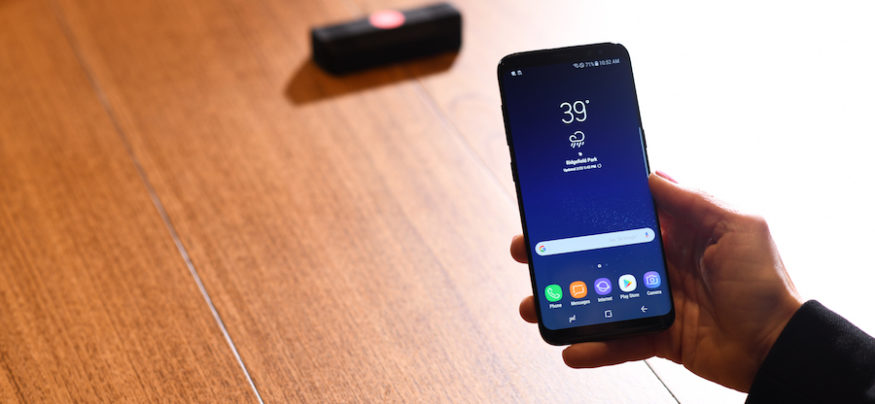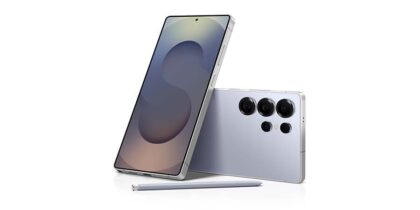Progress is good. But change? Yeah, change can be a little scary if you’re not prepared.
As you — or your users — make the move to an Android phone for the best productivity at work, how do you ensure their apps for communicating with friends and co-workers, business work, entertainment and in-car connectivity are just as good or even better than before?
Here are five ways you can ensure a smart switch from iOS to Android apps.
1. Communications: Crossing the Platform Chasm With Google Hangouts
iMessage is Apple’s instant messaging app for texts, photos, videos and more. It’s free on Apple devices, and can be convenient if all your friends and relatives are on Apple, too. That’s huge if, though: your pals and family are almost 4.5 times more likely to be using an Android phone than an iPhone.
Enter Google Hangouts. Hangouts provides all the same messaging features as iMessage, as well as live video chat. Moreover, Google Hangouts is a cross-platform app, available on billions of devices worldwide, including all Android smartphones and tablets, iPhones, iPads and iPod Touches, and Mac and Windows laptops and desktop PCs. Virtually anyone you would ever want to contact can be reached simply via Google Hangouts. And because Google Hangouts is cloud-based, all of your message history is automatically synced and viewable on any device. Download Hangouts, sign in with your Google account and you’re good to go.
2. Video Calling: Many Choices in Moving Pictures
FaceTime is Apple’s video chat app. Like iMessage, FaceTime is free and has some good features, but it runs on Apple devices only, and it only provides one-to-one video and audio calls. For Android users, there are many more — and more powerful — choices for video calling.
Not only does Google Hangouts run on many more devices, but it can support up to 25 callers in a real-time audio or video conference. And anyone you’ve ever e-mailed via Gmail is already a contact in Google Hangouts. Talk about convenience!
For high-def communications, there is also Google Duo. Available for Android and iOS, Google Duo lets you make audio and video calls, the latter in 720p high definition. Linked to your mobile phone number, Google Duo is easy to use and highly secure, with end-to-end encryption on by default. Simply download the Duo app and invite all of your contacts.
If you’re a Samsung user, you even have native video calling built right into your phone. All you need to do is go to Settings in your Phone icon to turn on video calling. You should then see a video camera icon next to your contacts. Click on it and you’ll be connected! Note that not all mobile carriers support native video calling.
Finally, all of the popular third-party video chat apps run on Android. From Skype and WhatsApp to Facebook Messenger to Line, Viber and many, many others, Android has you covered.
3. Apps Galore with Google Play
Speaking of app downloads, with Google Play, you’ll enjoy 3.6 million apps. All of the key third-party apps you rely on run extremely well on Android, from communications apps such as WhatsApp, Facebook and LinkedIn, to business-critical apps such as Salesforce, Citrix and VMWare. No new usernames and passwords needed — just sign in.
All of these are protected in real-time by Google Play Protect, which automatically scans your device for malware and needed security patches, as well as continually tests and verifies all of the apps hosted in Google Play.
Finally, for ultimate enterprise security and manageability, IT managers can create an Enterprise App store using the Managed Google Play Store alone or in conjunction with their Enterprise Mobility Management (EMM) platform.
4. Easier Entertainment Access in Android
iTunes is Apple’s two-decade-old online store for downloading music, podcasts, TV shows and movies, and ebooks.
Your Next Work Phone, Reimagined
See 9 reasons why the Galaxy S9 should be your next work phone in this infographic. Download Now
Unburdened by history, Google built its entertainment stores expressly in order to balance scale with organization and ease of use. So there’s Google Play Movies and TV, with a huge, easy-to-browse selection of 1080p and 4K HD shows and films to stream or download; Google Play Books, which is the largest collection of ebooks around with 5 million titles; and Google Play Music, a music and podcast streaming service that offers free and paid subscription access to 40 million songs. Google Play Music also lets you import up to 50,000 songs from your personal library, even if you’re a free user. Bringing over all the songs you’ve bought from iTunes or used to have on CD is a cinch.
Plus, all of these stores are linked to Google Play’s common, secure back-end infrastructure. Meaning your users won’t need to sign up for new accounts to get started.
5. Drive to the Future with Android Auto
CarPlay and Android Auto are versions of iOS and Android, respectively, that have been re-engineered to run on your car’s infotainment system. Both let drivers and passengers connect their respective phones with their cars in order to safely control music, navigate and communicate using voice commands, touchscreen and other in-car controls. That’s where the similarities end.
For one thing, Android Auto offers vastly more choice in the number of phones supported. And while CarPlay sticks with iOS’s basic app grid user interface, Android Auto’s UI has been optimized for the busy driver, providing contextual info such as weather, new notifications and suggestions via Google Maps. Android Auto also lets you wirelessly pair your phone with your car — another example of hands-free utility.
Making a Smart Switch
So, what about migrating your personal data? Not a problem. For many apps, your user accounts and data are hosted in the cloud and automatically accessible when you log into the Android version. For other apps, you can transfer your data using Android’s built-in backup feature, or, for owners of a Samsung device like the new Galaxy S9, you can use Samsung’s powerful, free Smart Switch app. Smart Switch lets you smoothly transfer everything from your calendar to your phone’s pictures and documents to Wi-Fi passwords. As for Apple-only apps such as iMessage, there are third-party tools that let you export the data in a standardized format that you can later import into an Android equivalent app at your leisure.
Armed with the right tools and info, switching to Android is not only painless, but will lead to a superior user experience in many, if not most, cases. That’s not just change for change’s sake, but true progress.
Time to upgrade your smartphone? Samsung Smart Switch makes it easy to transfer all your data to your new device.









